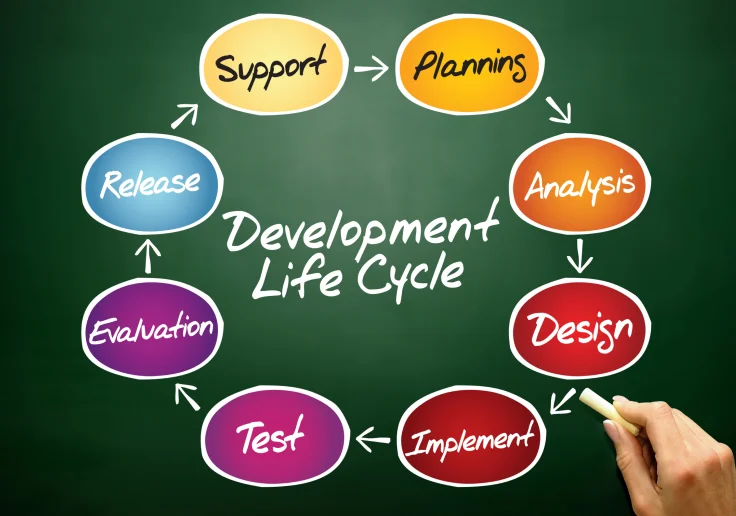Content
It’s useful to tackle this subject with in-depth questions such as “What are my working hours? ”, “How often will I check my work messages or task management tools? These four seemingly simple questions are worth taking the time to think over. We can even tweak them to create additional questions to encourage deeper understanding or target specific situations. This process reveals your work habits and how you prefer to work. You can ask yourself things like what are your most productive time periods?
The name “Storming”, rightly suggest, storms or turbulence. As the name “Forming” suggests, this stage represents the formation of the team. The team that’s in this stage has laid all the groundwork to be a highly-functioning team. Start from the top with our performance review template today. We hope this post has been informative and helpful in your understanding of the Tuckman Model.
Share your thoughts Cancel reply
Now it’s time to make sure everyone understands the incremental milestones on the way to your goal, and what their role is in helping the team get there. Clarity as to what success looks like at each milestone will give your team a much-needed confidence boost. Communication in the Workplace Crossed wires and missed connections – good communication among teams is tablestakes for effective teamwork. Get best practices and sound advice on how to create understanding and work together better.
Feedback comes from the mentees – the mentor helps them develop insight and understanding through reflections, that is, becoming more aware of their own experiences and areas of improvement. However, coaching relates to performance improvement (often short-term) in a specific skills area. The four stages of group development goals are typically set with or at the suggestion of the coach. While the learner has primary ownership of the goal, the coach has primary ownership of the process. In most cases, coaching involves direct extrinsic feedback (i.e. the coach reports to the coachee what he or she has observed).
Forming stage
Team members are asking such questions as “What does the team offer me? ” Most interactions are social as members get to know each other. This Tuckman’s Team and Group Model just says these are phases a team tends to cycle through. It’s not a hard and fast – they go through Stage 1, then Stage 2. It’s more to be aware of these phases and use them to inform your leadership or coaching (and for self-management too!). This is when the team has developed processes that work for the team and people follow them.
- When members have a strong bond with each other, they collaborate better and achieve a higher level of productivity.
- These are all valid answers since it’s what you as an individual deem important for your work life.
- For example, you can work on backend development or you can write copy for the website, etc.
- It’s more to be aware of these phases and use them to inform your leadership or coaching (and for self-management too!).
- His method originally only comprised four stages of team development until 1977, when he teamed with doctoral student Mary Ann Jensen to add a fifth stage.
In this stage typically team members are ready to leave causing significant change to the team structure, membership, or purpose and the team during the last week of class. While the group continues to perform productively they also need time to manage their feelings of termination and transition. The initial forming stage is the process of putting the structure of the team together. Team members feel ambiguous and conflict is avoided at all costs due to the need to be accepted into the group. Team members look to a group leader for direction and guidance, usually CORAL project guides. Regardless of how we personalize our leadership coaching, we’re committed to helping leaders unlock their full potential.
Stage 1: The Forming Stage
Instead of micromanaging them, trust them to get the job done. Please note that at this point, the aim of the exercise is to learn about your team members, rather than to control their behavior. So, first of all, let’s just recognize that this is how this person works. This is an opportunity to hear each other’s expectations so that everyone can https://globalcloudteam.com/ discuss and come to an agreement on what’s reasonable or acceptable. This helps to eliminate potential misunderstandings at work in the future due to mismatched expectations. The best AI tools for work and productivity We dive into the types of AI, the best tools for work and productivity, and how to choose the best AI tools for your work.

Team development typically follows the above five stages in a linear progression. However, it’s possible for teams to undergo a serious change that causes them to revert to an earlier stage. For example, a high volume of turnover in a short period might cause the team to return to the forming stage and start again. Permanent teams never reach the fifth stage of the Tuckman model. For others, however, there does come a point at which the overarching goals and mission of the team have been accomplished and it’s time to disengage.
Tuckman Ladder Model Stages of of Team Development
The Tuckman Ladder Model is a handy tool for understanding the development of teams and how they work together. It can give you information about how to help your team figure out solutions or brainstorm, and it can help you understand what to do next if you’re facing issues as a team. Your job as project manager is to keep things running smoothly!
In most professional circumstances there will be instances where employees will need to work together to complete a common goal or task. These situations can often be the cause of frustration, anxiety, and burnout for one or all members involved in the group (Mastering 5 Stages, n.d.). Members of a flustered and frustrated group can look at the 5 stages and use the behaviours that they’re exhibiting or general feelings of the group to track their progress within the five stages.
The Team Size Sweet Spot: Balancing Efficiency & Collaboration
Encourage team members to develop a schedule filled with large blocks of time that are free from interruptions like meetings or check-ins. In this world of constant notifications, it’s easy for people to get derailed and forget which goals are really important. This is especially important for creative and development teams. Behaviors during the Storming stage may be less polite than during the Forming stage, with frustration or disagreements about goals, expectations, roles and responsibilities being openly expressed. During the Storming stage, team members may argue or become critical of the team’s original mission or goals. In project management, the Tuckman Ladder is referenced and used extensively by project managers to help them assemble and guide teams toward success.




